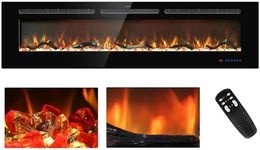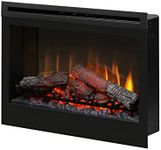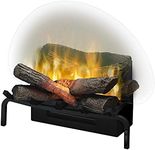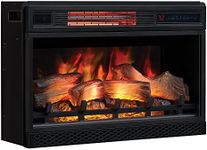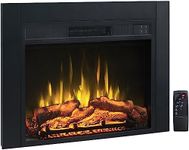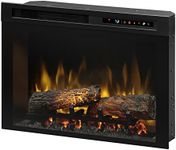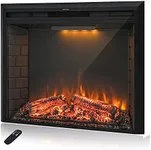Buying Guide for the Best Electric Insert For Fireplace
Choosing an electric insert for your fireplace is a great way to add warmth and ambiance to your home without the hassle of wood or gas. The right insert can transform an old, unused fireplace into a cozy focal point, and it’s important to consider your space, heating needs, and desired features before making a decision. Understanding the key specifications will help you find an insert that fits your lifestyle and enhances your living area.Heating Capacity (BTUs or Square Footage)Heating capacity tells you how much space the electric insert can effectively warm, usually measured in BTUs (British Thermal Units) or the number of square feet it can cover. This is important because you want an insert that can comfortably heat your room without being too weak or unnecessarily powerful. Smaller inserts typically heat up to 400 square feet, which is suitable for bedrooms or small living rooms, while larger units can handle 1,000 square feet or more, ideal for open-plan spaces. To pick the right one, measure your room and choose an insert that matches or slightly exceeds your space’s size for efficient and comfortable heating.
Flame Realism and Display OptionsFlame realism refers to how closely the electric insert mimics the look of a real fire, including the movement, color, and brightness of the flames. This is important if you want the cozy, authentic feel of a traditional fireplace. Some inserts offer basic flame effects, while others have advanced LED technology with adjustable colors and brightness. If ambiance is your priority, look for inserts with customizable flame settings and realistic logs or ember beds. If you just want supplemental heat, a simpler display may suffice.
Installation Type and SizeThe installation type and size determine how the insert will fit into your existing fireplace opening. Inserts come in various sizes and are designed for either plug-in or hardwired installation. It’s crucial to measure your fireplace opening carefully and compare it to the insert’s dimensions to ensure a proper fit. Plug-in models are easier to install and can be moved if needed, while hardwired units may require professional installation but offer a more seamless look. Choose based on your DIY comfort level and whether you want a permanent or flexible solution.
Controls and FeaturesControls and features refer to how you operate the insert and any extra conveniences it offers, such as remote controls, timers, thermostats, or smart home compatibility. These features are important for ease of use and comfort. Basic models may have manual switches, while advanced ones let you adjust settings from across the room or even with your phone. Think about how you want to interact with your insert—if you value convenience, look for models with remote or app controls and programmable timers.
Safety FeaturesSafety features include things like overheat protection, cool-touch glass, and automatic shut-off. These are important for peace of mind, especially if you have children or pets. Overheat protection turns the unit off if it gets too hot, while cool-touch glass prevents burns. If safety is a top concern, prioritize inserts with multiple safety certifications and features.
Energy EfficiencyEnergy efficiency describes how much electricity the insert uses to produce heat and ambiance. This is important for keeping your energy bills in check and reducing your environmental impact. Some inserts have energy-saving modes or let you run the flame effect without heat. If you plan to use your insert often, look for models with adjustable heat settings and energy-saving features to match your usage patterns.

